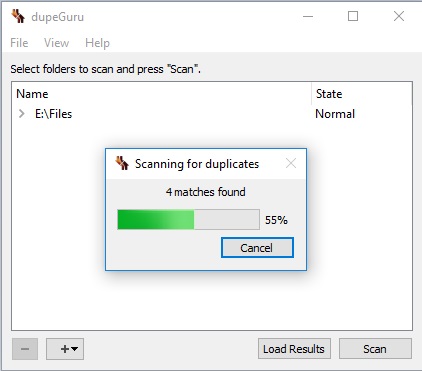

In the image above, I selected duplicates whose names contained “86.” That could be useful if, for instance, I had become aware of duplication among files whose names used the year 1986 in different ways (e.g., 1986, ’86). (The Uncheck tab reciprocally offered the same ways of unchecking checked files.) Specifically, the user could check all listed files, or all files that s/he might have manually selected (i.e., highlighted), or the first or last files in a group (which could mean any of the radio buttons arrayed across the top: files grouped into duplicate sets, or by duplicate filenames, or in the same folders, or files of the same size, or having the same date or CRC32 hash). As indicated at top left, the user could check files - that is, add checkmarks to indicate files to be deleted - in several ways. I was usually interested in an exact comparison, and thus focused on the content option (i.e., byte-per-byte comparison, as distinct from other possibilities, e.g., look for files whose first 4KB are identical).Īfter running that search, the user would then see a DoubleKiller screen like the one shown above. There were four general categories of comparison (i.e., name, date, size, and content), with endlessly customizable options in each (e.g., consider files to be duplicates only if (a) the last 23 characters of their names are the same and (b) their sizes do not differ by more than 198 bytes). The user would also click on the Comparison Options tab to specify the sort of comparison to be run. In DoubleKiller, the general idea was that the user would click on the Scan Options tab (at top left) to name the folders to be compared to specify files (e.g., file.txt) or file types (e.g., f*.txt), with the option to either exclude those from the search or (just the opposite) to limit the search to only those files or types to ignore, exclude, or limit the search to files of a certain size and/or with certain attributes (e.g., read-only) and so forth.
#Dupeguru limit windows 10#
In this image, we have a screenshot of DoubleKiller on the left and dupeGuru on the right, both running in Windows 10 (double-click to enlarge):Īs the image illustrates, DoubleKiller offered a denser listing than dupeGuru. This side-by-side comparison image may provide a sense of the difference. I had also concluded that, for my purposes, dupeGuru was not a serious competitor against DoubleKiller. In previous searches, I had repeatedly seen that dupeGuru was considered among the best Linux tools for this purpose.

Perhaps I should begin by explaining what I was looking for, by describing a bit of my usage of DoubleKiller in Windows.
#Dupeguru limit software#
It seemed that I would have to find duplicate detection software written for Linux. As described in the post reporting on that effort, I had unfortunately found that DoubleKiller performed poorly in Wine. I had recently tried to run DoubleKiller in Linux using Wine. As part of that process, I was interested in finding Linux software that could detect duplicate files. As described in another post, I was in the process of developing a ransomware-resistant backup system that relied, in part, on a Linux system.


 0 kommentar(er)
0 kommentar(er)
